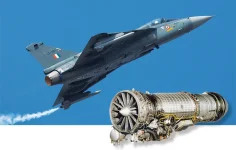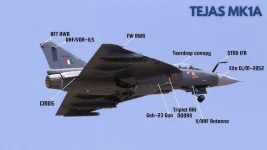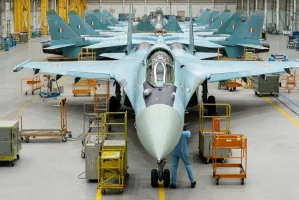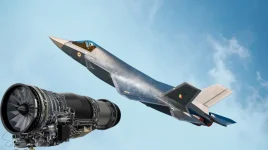- Views: 3K
- Replies: 4
The Indian Army's artillery capabilities are set to receive a significant enhancement, with leading Indian private defence manufacturer Larsen & Toubro (L&T) preparing to deliver an additional 100 K9 Vajra-T Self-Propelled Howitzers (SPHs).
Deliveries for this new batch are anticipated to commence by the end of 2025, furthering the nation's ongoing artillery modernization.
This development follows the successful induction of an initial 100 K9 Vajra-T systems between 2018 and 2021, which have demonstrated their effectiveness across varied Indian terrains, notably in the high-altitude conditions of Ladakh.
The new order, valued at approximately ₹7,628.7 crore (around $890 million), was officially confirmed on December 24, 2024, through an agreement with South Korean partner Hanwha Aerospace. This procurement marks a continued emphasis on India's Aatmanirbhar Bharat initiative, which aims to foster self-reliance in national defence manufacturing.
The K9 Vajra-T is a 155mm/52-caliber tracked self-propelled howitzer, specifically adapted from Hanwha Aerospace's K9 Thunder to meet the Indian Army's unique operational requirements. It offers a formidable combination of mobility, substantial firepower, and enhanced crew survivability.
Capable of accurately engaging targets up to 40 kilometres away using K307 Base Bleed High Explosive (HE) ammunition, the howitzer can also deliver a rapid burst of three rounds within 15 seconds.
Its proven ability to operate effectively in diverse and extreme environments, from the deserts of Rajasthan to the freezing mountainous terrain of Ladakh, has established it as a critical component of the Indian Army's artillery upgrade plans.
These mobile artillery platforms are designed to provide crucial fire support to infantry and armoured formations during combat.
Central to the new contract, finalised after comprehensive discussions with the Ministry of Defence, is an increase in the system's indigenous content.
While the first batch featured over 50% localization, the upcoming howitzers aim for approximately 60% indigenous components. This includes integrating more Indian-made subsystems such as advanced fire control systems, communication equipment, and ammunition handling mechanisms.
This push for greater domestic sourcing is expected to significantly strengthen India’s defence industrial base. L&T’s Armoured Systems Complex (ASC) in Hazira, Gujarat, will continue to serve as the primary production facility.
The 40-acre complex, which was inaugurated by Prime Minister Narendra Modi in 2019, has already showcased its production prowess by delivering the initial 100 howitzers ahead of schedule.
The Indian Army's decision to procure these additional 100 K9 Vajra-T units was significantly influenced by the system's commendable performance during the 2020 border standoff with China along the Line of Actual Control (LAC) in Ladakh.
Although initially designed for desert warfare, the howitzers were successfully modified with winterization kits and updated range tables to perform exceptionally in high-altitude, sub-zero environments.
The deployment of a full regiment, comprising 18 K9 Vajra-T guns, in Ladakh effectively demonstrated their capacity for long-range, precise artillery support. This operational success spurred the Army to expand its fleet to address evolving regional security challenges, particularly along the northern borders.
The forthcoming batch of K9 Vajra-T howitzers is expected to incorporate enhancements based on operator feedback, potentially including upgraded subsystems for even better performance.
The agreement also encompasses a Life Cycle Support Contract (LCSC), for which a Request for Proposal was issued on November 1, 2024, to ensure the long-term operational readiness and maintenance of these systems.
Deliveries are planned to extend through early 2028, ultimately providing the Army with a total of 200 K9 Vajra-T systems. These will play a crucial role in bolstering the firepower of mechanised strike corps and enhancing deployments in mountainous regions.
This procurement is a key part of the Indian Army’s broader artillery modernization strategy. This long-term plan aims to standardize its diverse gun systems to the 155mm/52-caliber specification by the year 2042.
Alongside the K9 Vajra-T, the Army is also inducting other modern artillery platforms such as the indigenously developed Advanced Towed Artillery Gun System (ATAGS), the Dhanush towed howitzer, and the Pinaka Multi-Rocket Launch Systems.
The K9 Vajra-T's ability to keep pace with fast-moving tank columns, combined with its capability for Multiple Rounds Simultaneous Impact (MRSI) – where multiple shells fired in a sequence strike a target at the same moment – makes it an invaluable asset for both offensive and defensive operations.
The enduring collaboration between L&T and South Korea's Hanwha Aerospace, which began in 2012, has been pivotal in establishing India as a significant participant in the global defence manufacturing landscape. A related contract for component supplies, valued at $253 million, was signed on April 3, 2025, further cementing the defence partnership between India and South Korea.
With over 80% of the work for the K9 Vajra-T program localized and a widespread supply chain involving industries in Gujarat, Maharashtra, Karnataka, and Tamil Nadu, the initiative continues to generate thousands of direct and indirect employment opportunities, contributing substantially to India's economic growth.





